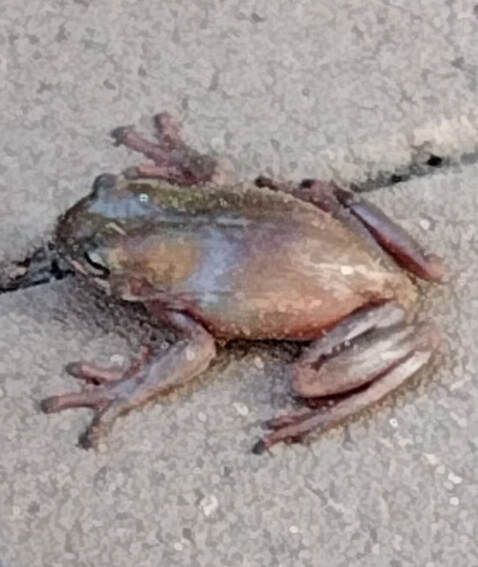
Photo: Australian Green Tree frog (Forster, N.S.W, Australia)
Frogs are amphibious creatures that have ancestry going back at least 200 million years and were the first land animals to have vocal cords.
There are over 7000 species of frog and they are the largest group of amphibians ranging in size from smaller than a human finger to bigger than a human foot.
They are a cold blooded animal that is extremely adaptable and that has made their homes almost everywhere throughout the world.
Toads are similar to frogs with a few subtle differences. Frogs have smooth and moist skin whereas toads have a dry warty skin. Frogs are also more likely to be found near a water source such as ponds, creeks and streams.
Frogs also have longer hind legs that allow them to hop vast distances quickly and swim through water rapidly.
A few examples of their adaptability are:
The Wood frog of North America that can live north of the Arctic Circle and survives the extreme cold with up to 65% of it's body water frozen. They achieve this by having glucose in their body which acts as an anti-freeze protecting its vital organs.
The Water-Holding frog that lives in Australia can live for years without drinking and in periods of hot dry weather buries itself in up to a meter (3 feet) of sandy ground in a water-tight cocoon made of its own skin.
The male of the Darwin's frog carries his young in the vocal sacs in his mouth for up to 70 days. When the female lays her eggs the male keeps watch until the tadpoles hatch and he swallows them where they can safely grow within his vocal sac until they are baby frogs where upon he releases them.
There are 2 species of Darwin's frog. One is in southern Chile and Argentina and the Northern Darwin's frog is found in northern Chile although hasn't been seen since 1981 and may be extinct.
Sadly frogs have been in decline since the 1950's and are thought to be bellwethers for the state of the environment.
However, there are many ways to make your own yard frog friendly and listed below are some wonderful ideas you may like to read about plus more interesting information on frogs and toads.
Links on building a frog friendly garden:
www.youtube.com/watch?v=mhRiUqjhkx4
gardenculturemagazine.com/frog-friendly-gardens/
nwf.org/Magazines/National-Wildlife/2000/Want-to-Host-a-Garden-Party-for-Frogs
Links for information on frogs and toads:
www.burkemuseum.org/collections-and-research/biology/herpetology/all-about-amphibians/all-about-frogs
www.livescience.com/50692-frog-facts.html
www.pbs.org/wnet/nature/blog/frog-fact-sheet/
Brendon Crook
 RSS Feed
RSS Feed